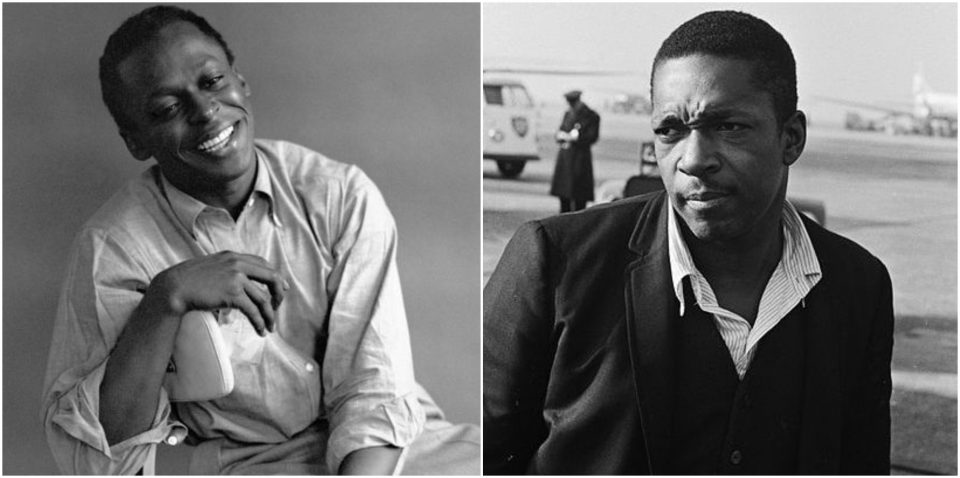Jazz Corner: The Legacies of Miles Davis and John Coltrane
There is no doubt that both Davis and Coltrane are perhaps the largest influences in the trend of jazz in the second half of the twentieth century
Occasionally, a thought-provoking question comes up which makes for an interesting dialogue. I had one such question posed to me the other day by an eminent musician and it is most worthy of analysis. My friend and well-known urban folk singer-songwriter Susmit Bose was wondering about Miles Davis and John Coltrane. He asks, “Was Coltrane as responsible for the change in jazz music as Davis?”
It makes for a fascinating discussion! There is no doubt that both Davis and Coltrane are perhaps the largest influences in the trend of jazz in the second half of the twentieth century, along with Dizzy Gillespie and to some extent Sonny Rollins.
Coltrane was an important part of Davis’ band in the 1950s. They recorded several albums together including the path-breaking, all-time best-selling jazz album, Kind of Blue. This album, although recorded over 60 years ago is heard by and appreciated to this day by both jazz and other music listeners.
Now about these individuals: Although he died when he was just 40, Coltrane‘s legacy to jazz is huge. Every saxophone player since Coltrane has been influenced by the master. He died in 1967; so, we are talking about several generations that have followed. Davis was 65 when he passed away. Ironically, his trumpet playing has not been emulated — except by the late Wallace Roney, who was more imitator than original — by trumpet players. Make no mistake; Davis was a beautiful trumpet player. He could slay you with the sound of his muted trumpet. His melodic notes are out of this world.
The true greatness of Davis lay in the directions into which he steered jazz. “I changed jazz six times” was one of his classic comments! This is what he did: In the early 1950s, when up-tempo bebop was the rage, Davis came up with his album, Birth of the Cool, with a set of melodic, introspective compositions. It made the jazz world sit up and take notice. He used the arranger Gil Evans to structure this elegant album. Later he used Evans for many more albums among which Sketches of Spain and Porgy and Bess stand out.
Another outstanding feature of Davis was his uncanny ability to bring great jazz musicians into his band. His piano players alone — Red Garland, Bill Evans, Wynton Kelly, Victor Feldman, Herbie Hancock and others are the who’s who of great jazz pianists. He also picked some esoteric saxophone players; Coltrane, Cannonball Adderley, Hank Mobley, George Coleman, Wayne Shorter, Bennie Maupin and others — a truly impressive group. And of course he had the best bass players and drummers in his various bands. Davis formed his classic quartet with Coltrane and recorded some stunning albums before adding Adderley into the mix for Kind of Blue, Milestones and other albums.
Davis came up with the concept of ‘modal’ jazz where simple chords and melodic improvisation dominated the music. Kind of Blue is a prime example of this approach. Later, Miles delved into the potential and possibilities of sounds from the then-new generation of electronic equipment. It was as much an experiment as a method of staying relevant in a music world then dominated by what is now referred to as classic rock.
Davis may have had commercial success with this electronic sound approach and perhaps even created a following among a new, young audience. However, he probably lost a lot of his old, faithful followers with this new, enigmatic approach to jazz. Jazz had veered into a completely uncharted course.
Coltrane was always a voice of his own, unique, expressive and often quite sensitive. He undoubtedly found direction and renown with Davis, working within a structure of discipline and simplicity. However, he had an inner urge to express his spiritual self. Forming his own quartet in around 1960, Coltrane became a messiah with a tenor saxophone. His magnum opus A Love Supreme is an all-time great jazz album. I was privileged to be at the album launch in New York and in the course of the evening had a chance to have a long chat with the great man. He felt he was reaching out to the Almighty through this composition. It actually sounds like that when you hear the album.
Coltrane’s playing on this album and a few others from that period is quite mesmerizing. This is the sound that has had an impact on dozens of players since. However, Coltrane died young and probably would have scaled even greater heights, brought new concepts into jazz… not just of his sound but also his inspiration.
I am absolutely sure that without Miles Davis and John Coltrane in the 1950s and Sixties, jazz would have sounded very different today. I had the good fortune to hear both Miles and ‘Trane in person. I can say they have left behind Giant Footprints. Equal, unequal, more, less? Miles or Coltrane? You decide, Susmit Bose!
Sunil Sampat is a jazz critic and Contributing Editor of Rolling Stone India. Write to Sunil at jazzwala@gmail.com








